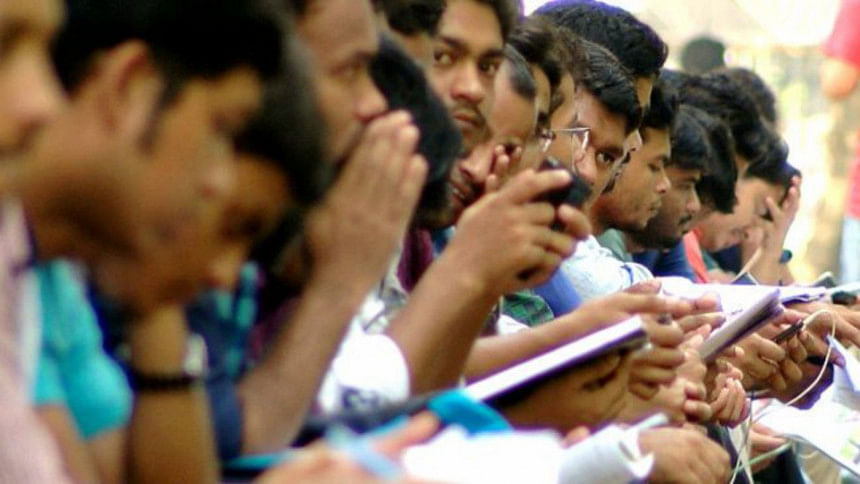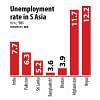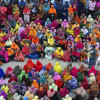Unemployment rises

Bangladesh's unemployment rate rose to 4.49 percent in the July-September quarter of 2024 from 4.07 percent a year earlier, with women bearing the brunt of the downturn, according to official data, as political turmoil and security concerns took a toll on the labour market.
The jobless rate for women surged to 7.16 percent from 6.15 percent year-on-year, while the unemployment rate for men edged higher to 3.81 percent from 3.46 percent over the same period, data from the Bangladesh Bureau of Statistics (BBS) showed.
In total, the number of unemployed individuals reached 26.6 lakh in the third quarter of last year, an increase of 1.7 lakh from a year earlier.
Of the total unemployed population, jobless men accounted for 17.9 lakh, up from 16.4 lakh in the same period the previous year, while the number of unemployed women reached 8.7 lakh, compared with 8.5 lakh a year earlier.
Experts have attributed the rise to widespread layoffs and safety concerns in urban areas, particularly affecting women.
"The political unrest in July and August likely exacerbated the unemployment situation," said Selim Raihan, executive director of the South Asian Network on Economic Modeling, a research organisation. "For women, the security challenges in urban areas could also be a significant factor."
Towfiqul Islam Khan, a senior research fellow at private think-tank the Centre for Policy Dialogue (CPD), said the overall demand fell during the July-September quarter as industries faced a challenging time.
"It was a volatile time. Both labour supply and demand decreased significantly," he said.
The figures were compiled using the global standards outlined by the 19th International Conference of Labour Statisticians (ICLS), hosted by the International Labour Organization.
This marks the first time Bangladesh's statistical agency has adopted the updated methodology in its quarterly labour report, alongside the data under the 13th ICLS, aiming to provide more precise and timely employment data. Most countries have transitioned to using the 19th ICLS standards to improve the accuracy of their labour force surveys.
As per the 13th ICLS, the unemployed population was 25.50 lakh, or 3.64 percent of the total in the July-September period, up from 24.3 lakh or 3.31 percent a year ago.
CPD's Towfiqul welcomed the publication of labour data in line with the 19th ICLS to portray a better picture. "However, BBS did not publish its sectoral data. So, it would not actually help the policymakers," he said.
However, Prof Raihan questioned the definition of the unemployed, saying the BBS data does not reflect the actual picture of the labour market.
According to the definition followed by the BBS, a person is to be considered unemployed if he or she did not work at all during the previous week (not even for an hour) or was temporarily absent from work.
"Our national labour market condition is not quite good. While the unemployment rate is reported to be below 5 percent — often referred to as the natural rate of unemployment. It is confusing and fails to provide an accurate picture of the labour market," said Prof Raihan.
The real situation would have been evident if individuals who fall under the condition known as "disguised unemployment" were counted, he said.
"In any case, if we take into consideration the disguised unemployed, the unemployment rate would likely be 10 percent," he said.
"Our economic growth is not effectively helping us for sufficient job creation because it is heavily reliant on a few specific sectors, such as ready-made garment and remittance," Prof Raihan explained.
The World Bank in its development update report in October 2024 said Bangladesh's economic progress over the last decade did not translate into a sufficient number of urban jobs in industry. "As a result, Bangladesh is at risk of missing out on a historical opportunity to take advantage of demographic dividends," the report said.
Between 2016 and 2022, the manufacturing sector grew annually by 9.1 percent on average, but jobs in this sector declined by 9.6 percent, according to the report. During this period, employment in urban areas grew by only 7 lakh while most new jobs were created in the agriculture sector, where a significant portion are low-paying informal employment.

 For all latest news, follow The Daily Star's Google News channel.
For all latest news, follow The Daily Star's Google News channel. 







Comments